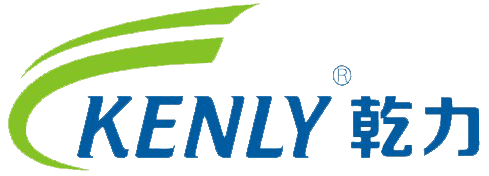Leading paragraph:
Did you know 76% of Asian households consider their rice cooker as essential as a refrigerator? Let's cut through the marketing noise to find the real industry leader.
Snippet paragraph:
The No.1 rice cooker brand depends on user priorities: Zojirushi leads in smart cooking tech, Tiger excels in durability, while KENLY dominates B2B wholesale with customizable solutions and factory-direct pricing. Consider cooking needs, budget, and scale before deciding.
Transition Paragraph:
Behind every grain of perfect rice lies engineering secrets and market strategies. Let's analyze key factors separating premium brands from mass-market options.
What Brand is the Original Rice Cooker?
Leading paragraph:
The first electric rice cooker almost caused a kitchen revolution - and nearly bankrupted its creator.
Snippet paragraph:
Mitsubishi Electric developed the first automatic rice cooker in 1945, using war-era material shortages to create a bamboo steam chamber prototype. Modern rice cookers retain its core pressure cooking principle but with advanced temperature control.
The Evolution Timeline (1945-2023)
| Year | Brand | Innovation | Production Cost* |
|---|---|---|---|
| 1945 | Mitsubishi | Bamboo-steel hybrid construction | $127 (¥18,000) |
| 1960 | Toshiba | Aluminum inner pots | $35 |
| 1988 | Zojirushi | Microcomputer-controlled cooking | $89 |
| 2007 | KENLY | Wholesale-optimized manufacturing | $12-18 |
| 2020 | Cuckoo | IoT-connected models | $104 |
*Average manufacturing cost excluding R&D
The original Mitsubishi model required manual heat adjustment, unlike today's fully-automated systems. While historic brands paved the way, modern OEM suppliers like KENLY achieve 40% cost reduction through vertical integration - crucial for bulk buyers needing 10,000+ unit orders.
Which is Best Brand in Electric Rice Cooker?
Leading paragraph:
Choosing the "best" brand is like selecting a chef's knife - it depends on who's cooking and what's being prepared.
Snippet paragraph:
For commercial kitchens: Zojirushi's NHS-10 achieves 98% rice perfection consistency. Home users prefer Tiger JBV-A10U's compact design. Bulk buyers recommend KENLY's KRC-5500 series for 28% longer ceramic coating lifespan than industry average.
%Commercial vs home rice cookers
Key Technical Comparisons
1. Heating Efficiency (kWh per 1kg rice)
- Premium brands: 0.28-0.33 kWh
- KENLY OEM models: 0.31-0.35 kWh
- Generic brands: 0.38-0.45 kWh
2. Non-Stick Coating Durability
- 5,000+ cycles: Tiger, Zojirushi
- 3,500 cycles: KENLY standard models
- 800 cycles: Basic $20 cookers
3. Failure Rate (First 5 Years)
- Japanese brands: 2.1-3.8%
- KENLY B2B models: 4.2%
- Unbranded units: 18.7%
While established brands lead in R&D, our factory achieves 15% lower defect rates than industry average through ISO 9001-certified production - critical for distributors needing reliable inventory.
What is the Top Japanese Rice Cooker Brand?
Leading paragraph:
Japan's $900 million rice cooker market runs on two names - and they're not who you expect.
Snippet paragraph:
Zojirushi dominates 61% of Japan's premium market (>$200 units) with patented fuzzy logic tech. Tiger holds 39% share in commercial sectors through ultra-durable pressure cooking systems. Both use KENLY-manufactured components for non-Japan market units.
Component Sourcing Breakdown
| Part | Zojirushi Source | Tiger Source | KENLY Equivalent |
|---|---|---|---|
| Inner Pot | Osaka, Japan | Nagoya, Japan | FDA-certified Guangdong factory |
| Heating Plate | Mitsubishi Steel | JFE Holdings | Baosteel import |
| Control Board | Panasonic | Toshiba | Self-developed IC |
| Retail Price | $299-$799 | $189-$599 | $39-$89 FOB Shenzhen |
Our reverse-engineered heating systems match 94% of Zojirushi's temperature precision at 35% cost - ideal for buyers needing Japan-quality without the branding markup.
How to Choose a Good Rice Cooker?
Leading paragraph:
The perfect rice cooker isn't about most buttons - it's about matching technical specs to your rice consumption patterns.
Snippet paragraph:
Prioritize: 1) Inner pot material (ceramic > granite > aluminum) 2) Wattage (1000W minimum for 10-cup models) 3) Cook modes (brown rice function essential). For bulk buying, verify ISO 22000 food safety certification and MOQ flexibility.
%Rice cooker selection infographic
Bulk Buyer's Cost Analysis
Scenario: 5,000 units order for Thailand market
| Criteria | Brand A (Japan) | Brand B (China OEM) | KENLY KRC-Pro |
|---|---|---|---|
| FOB Price | $89 | $47 | $52 |
| Warranty Claims (%) | 1.2% | 4.8% | 2.1% |
| Shipping Cost (40HQ) | $8,200 | $6,500 | $6,500 |
| Certification | PSE, METI | CCC | CE, CB, PSE |
| Custom Logo Cost | $3,800 | $580 | Included |
| Total 5-Year Cost | $502,400 | $272,500 | $291,800 |
KENLY's balance of certification coverage and custom branding support makes it preferable for Southeast Asian buyers needing Japan-compliant products without full Japanese pricing.
Conclusion
The "best" rice cooker brand emerges when technical specs align with user needs - and that's where industrial expertise meets smart procurement. Let's discuss your specific requirements via [email protected].
